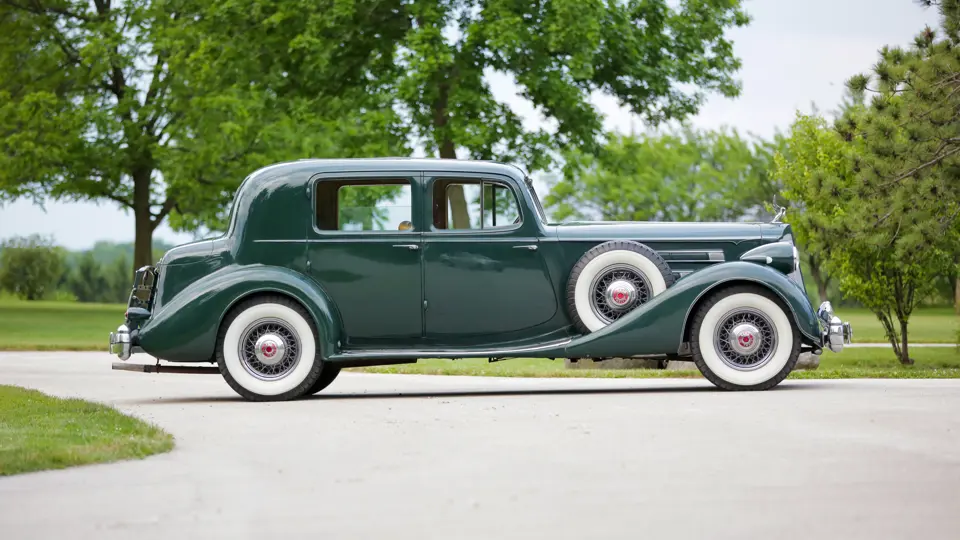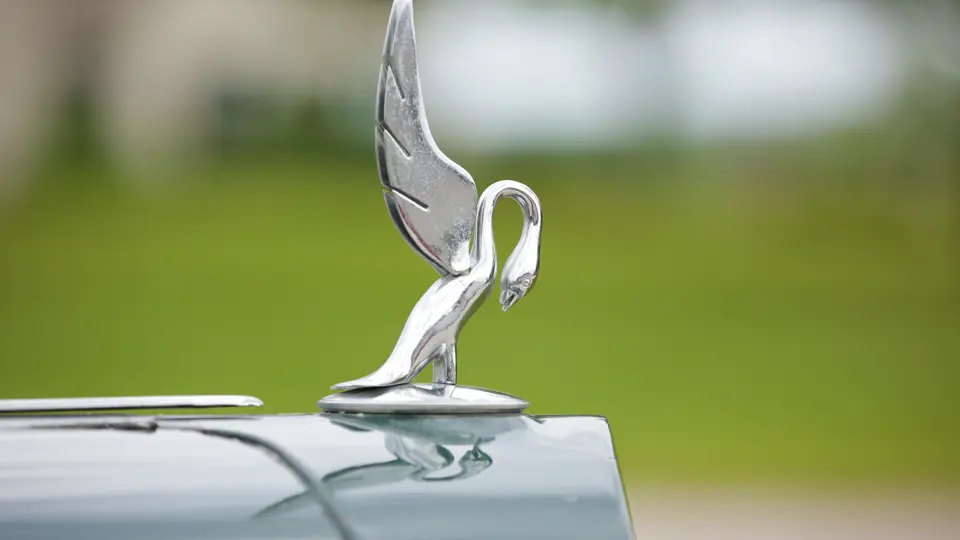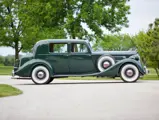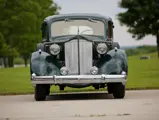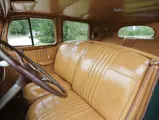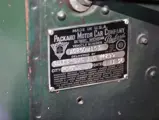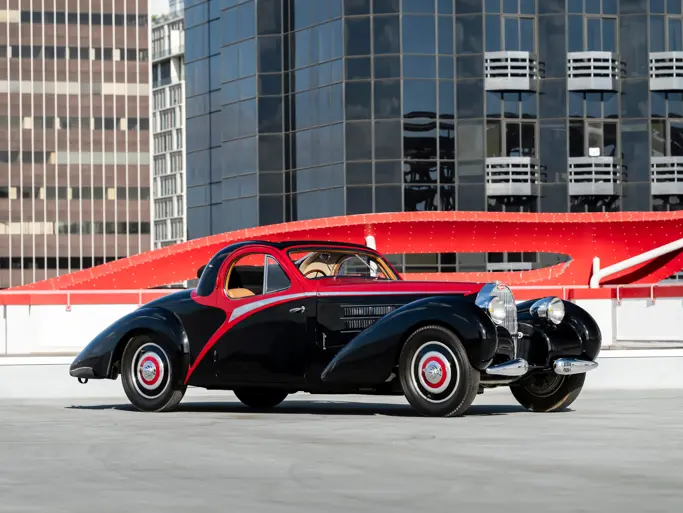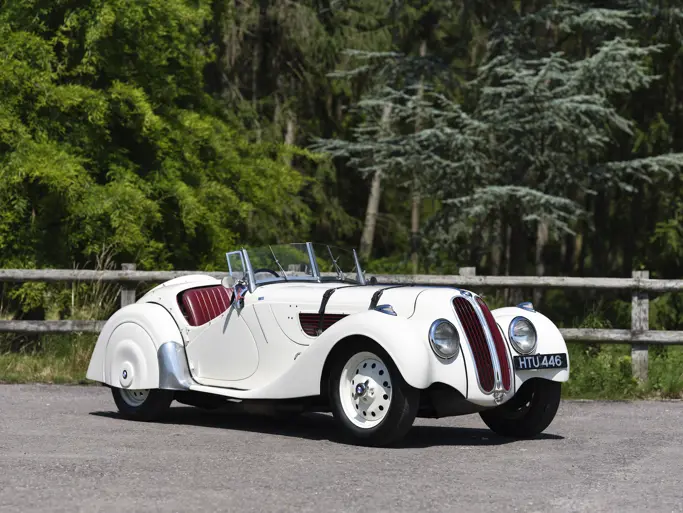175 hp, 473.3 cu. in. V-12 engine, Stromberg carburetor, three-speed manual synchromesh transmission, semi-elliptic leaf springs front and rear, live rear axle, and four-wheel vacuum-assisted hydraulic drum brakes. Wheelbase: 139.25"
• Dual side-mount club sedan; single Minnesota ownership for 42 years
• Museum quality survivor with rebuilt engine and older repaint
• One of only 340 Packard 14th Series Twelves
Like other luxury manufacturers, Packard responded to Cadillac’s twelve- and sixteen-cylinder volleys with more cylinders of its own, in this case a 445.5-cubic-inch, 160 horsepower V-12. Upon its introduction in 1932, it was called the Twin Six, but given the refinements and advancements, such as double the horsepower of the original Twin Six, it was renamed the Twelve from 1933 until its discontinuation in 1939.
Initially designed by C.W. van Ranst with Tommy Milton and refined by Charles Vincent, brother of engineering head Col. Jesse Vincent, the Twelve boasted 322 foot-pounds of torque, which could propel coachbuilt sedans and limousines to 60 mph in twenty seconds. The nearly horizontal valve stems operated by a camshaft deep in the engine’s heads through roller rockers on hydraulically adjusted eccentrics produced a nearly silent result. In 1935, aluminum heads and a longer stroke boosted the engine displacement to 473-cubic inches and the horsepower to 175, putting 100 mph in reach.
The car on offer today is a museum quality survivor and was bought in New York in the late-1950s by a resident of a small southeast Minnesota town. He owned the car for 42 years, only driving it in parades. It was never completely repainted and was reupholstered in vinyl, to discourage moths. The present owner rebuilt the engine and it is described as utterly silent at idle. Fundamentally sound, with good chrome, twin side-mount spares, and a trunk rack, this five-passenger club sedan retains a tangible, handsome patina, complementing the world class display of engineering this car represents for 1936.
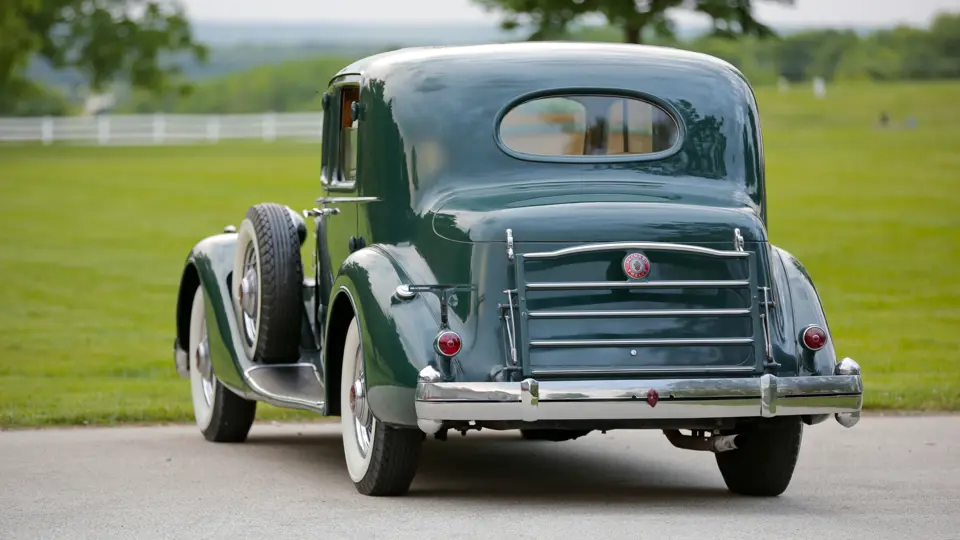



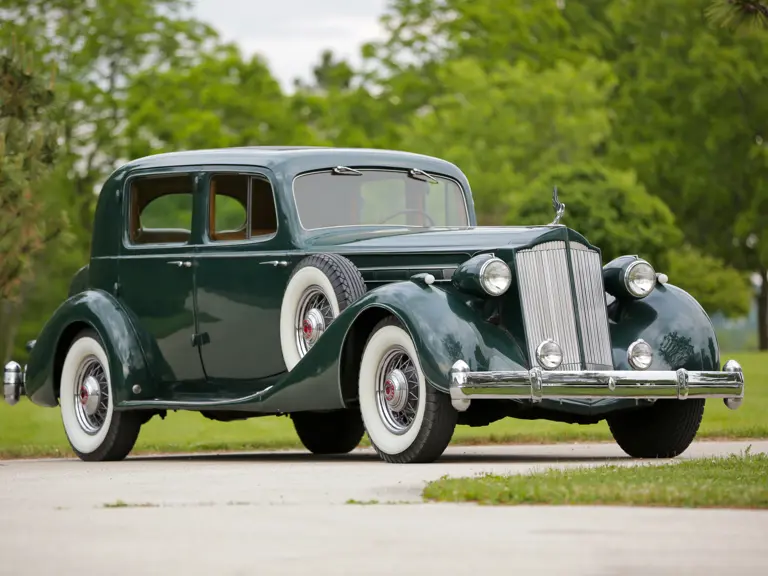

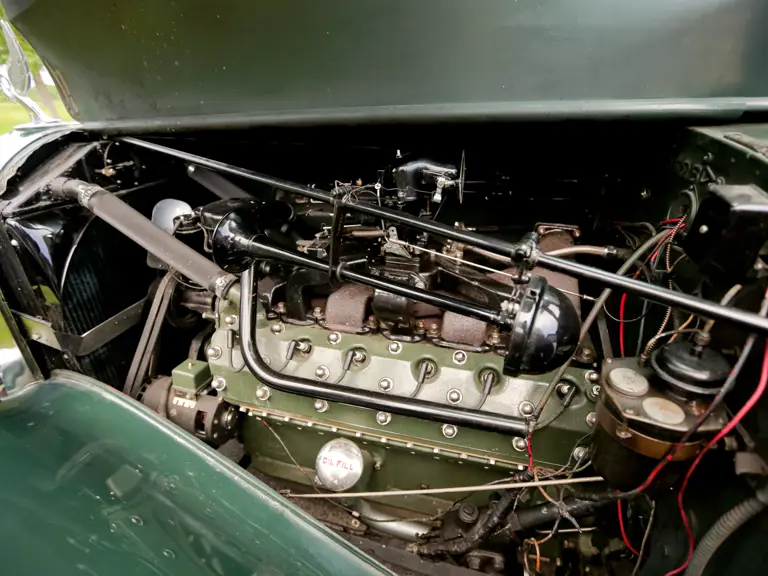



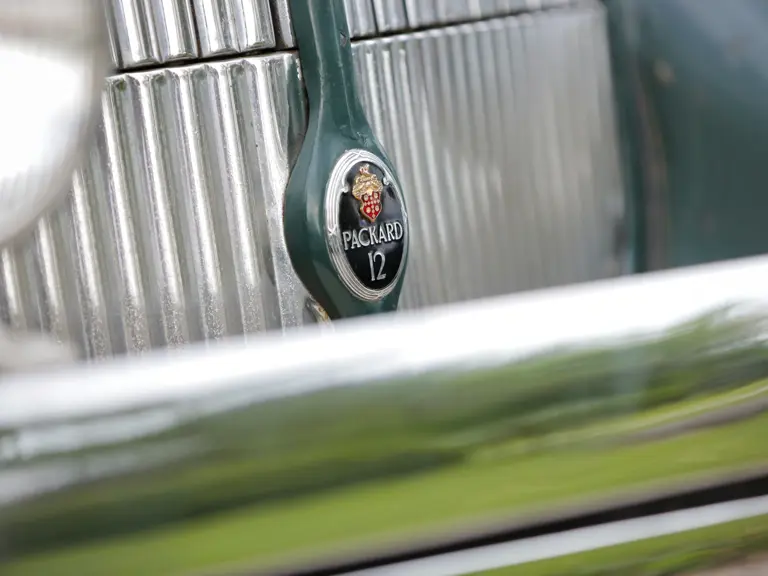


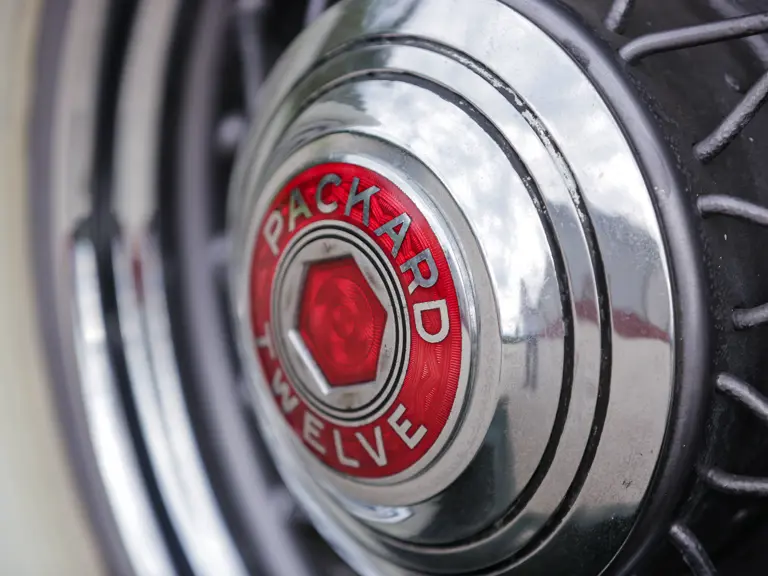
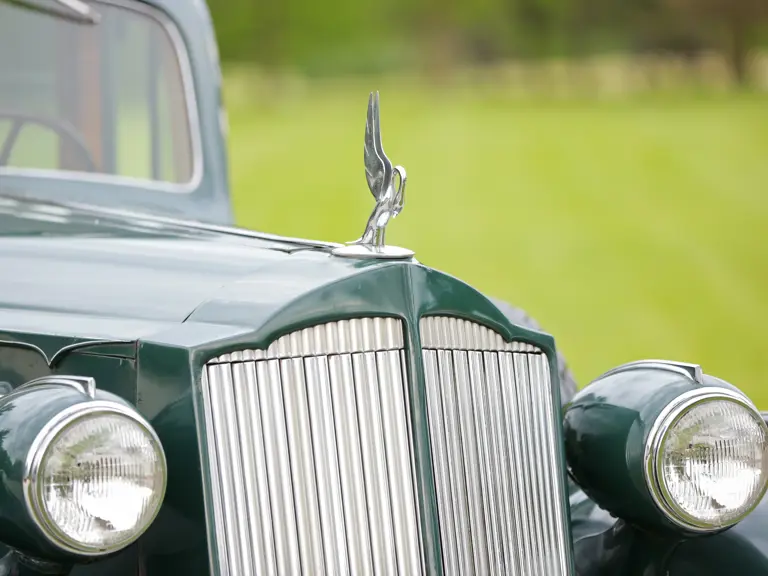

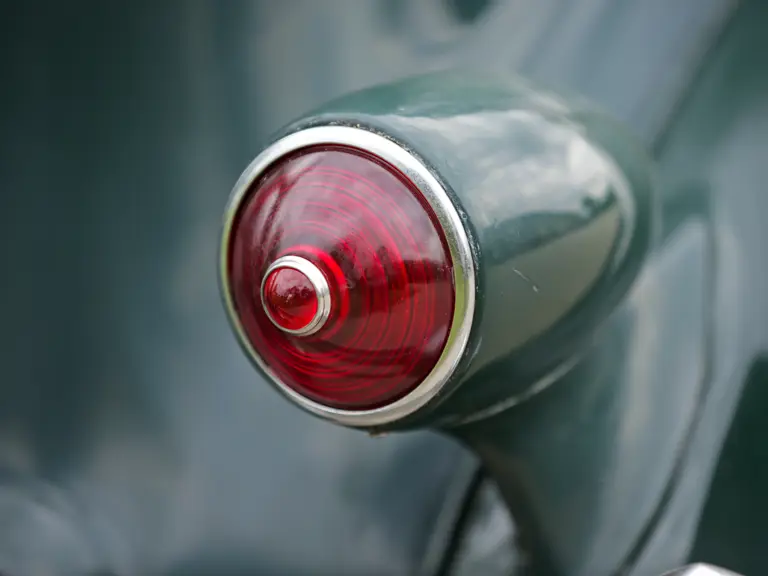
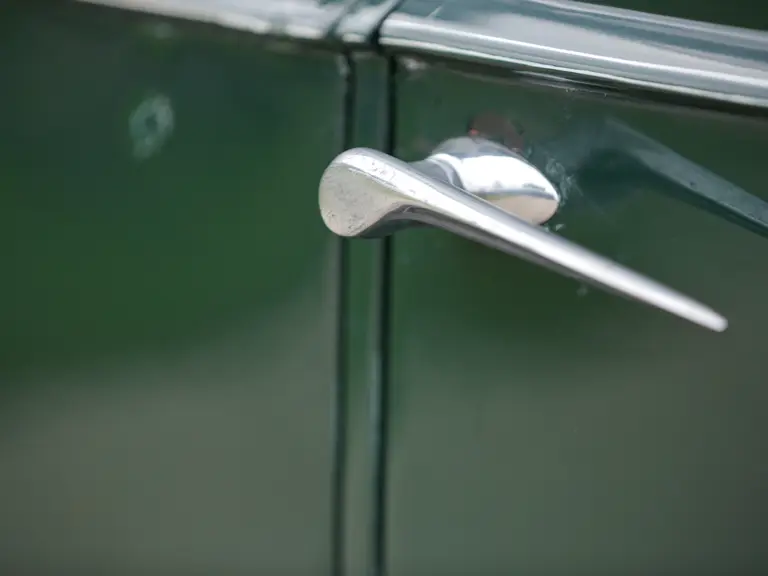
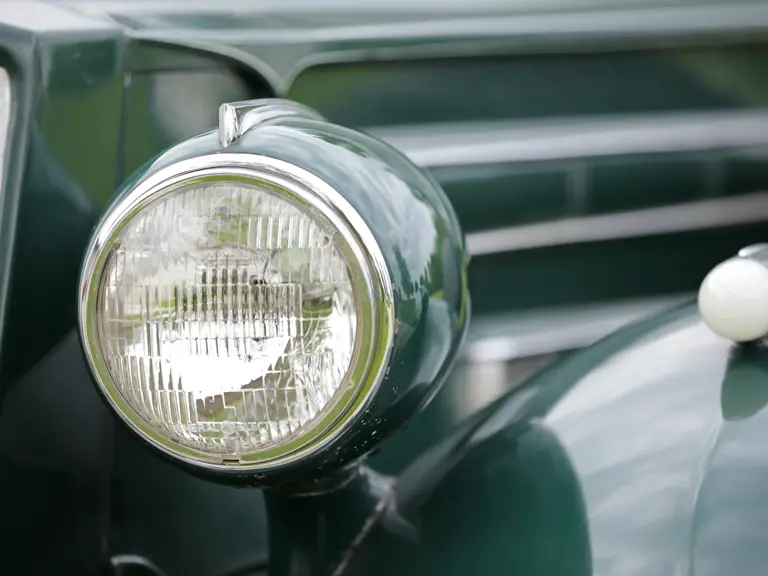



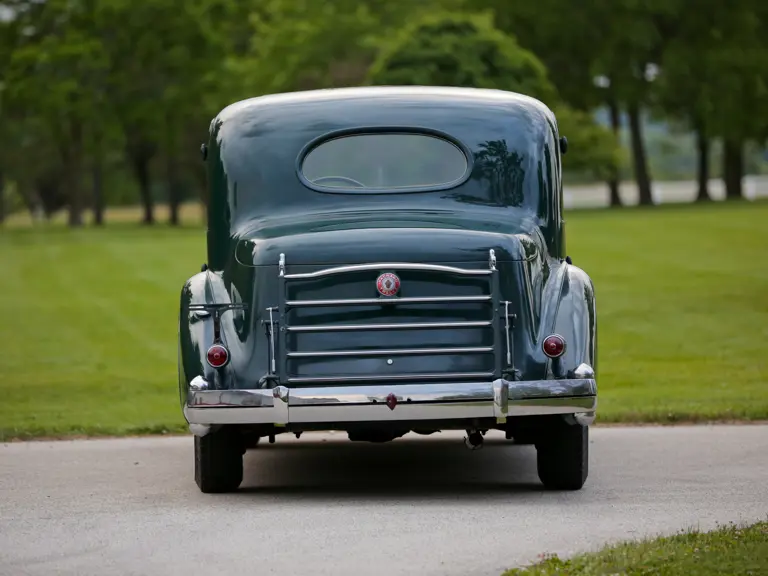
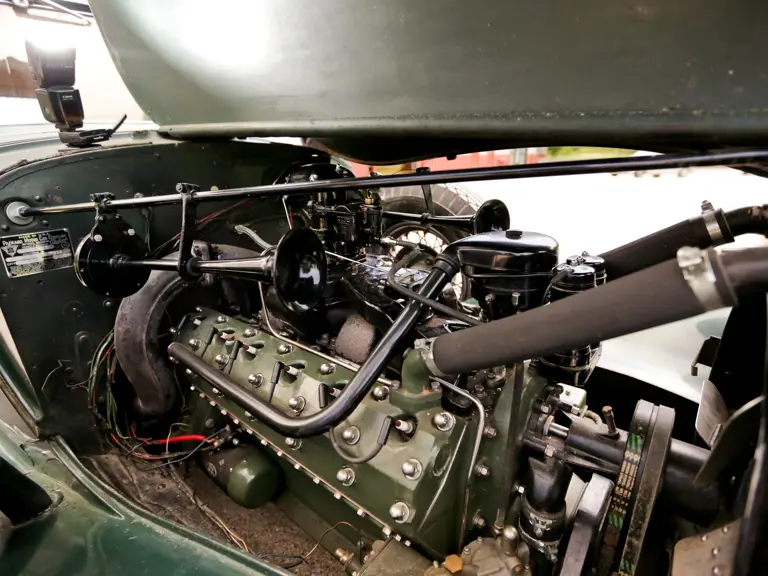


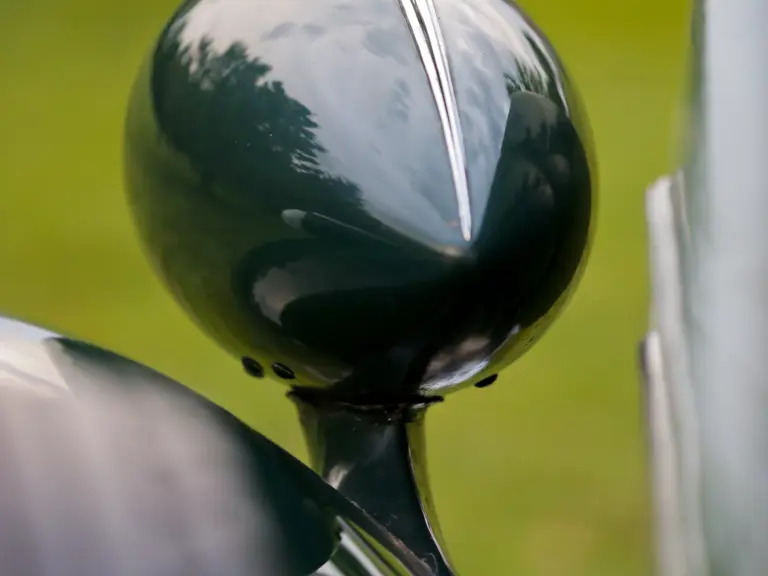



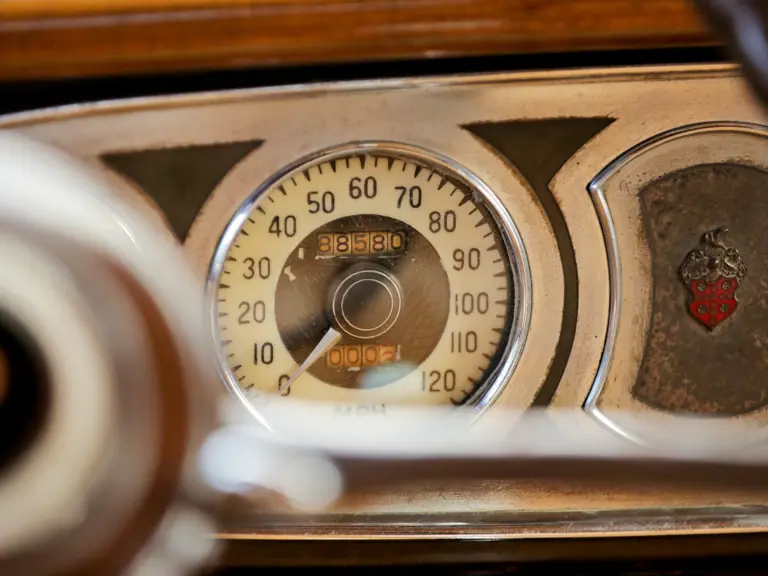
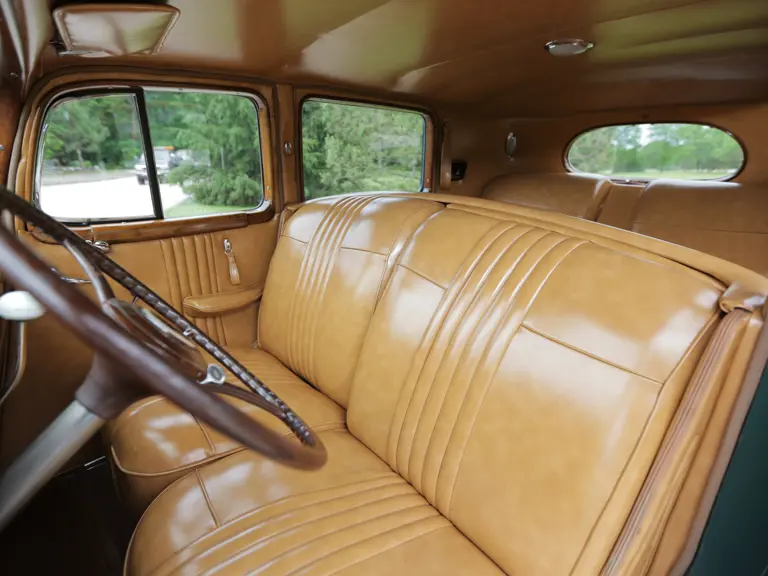


 | Plymouth, Michigan
| Plymouth, Michigan
